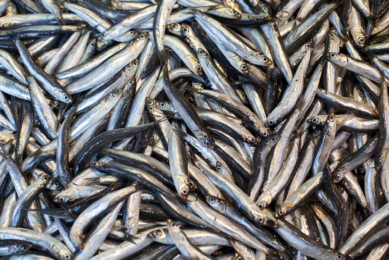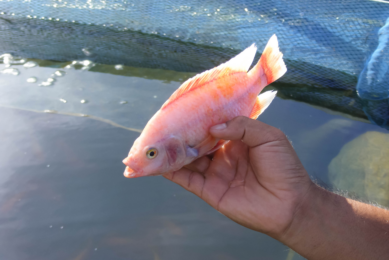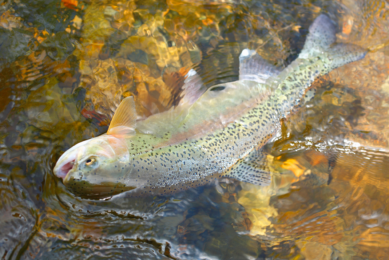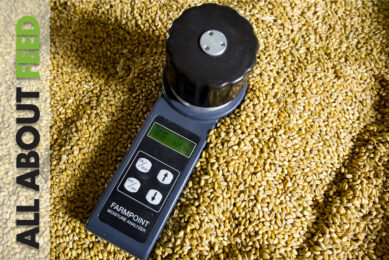Nile Tilapia to benefit from NSP-ases in diet
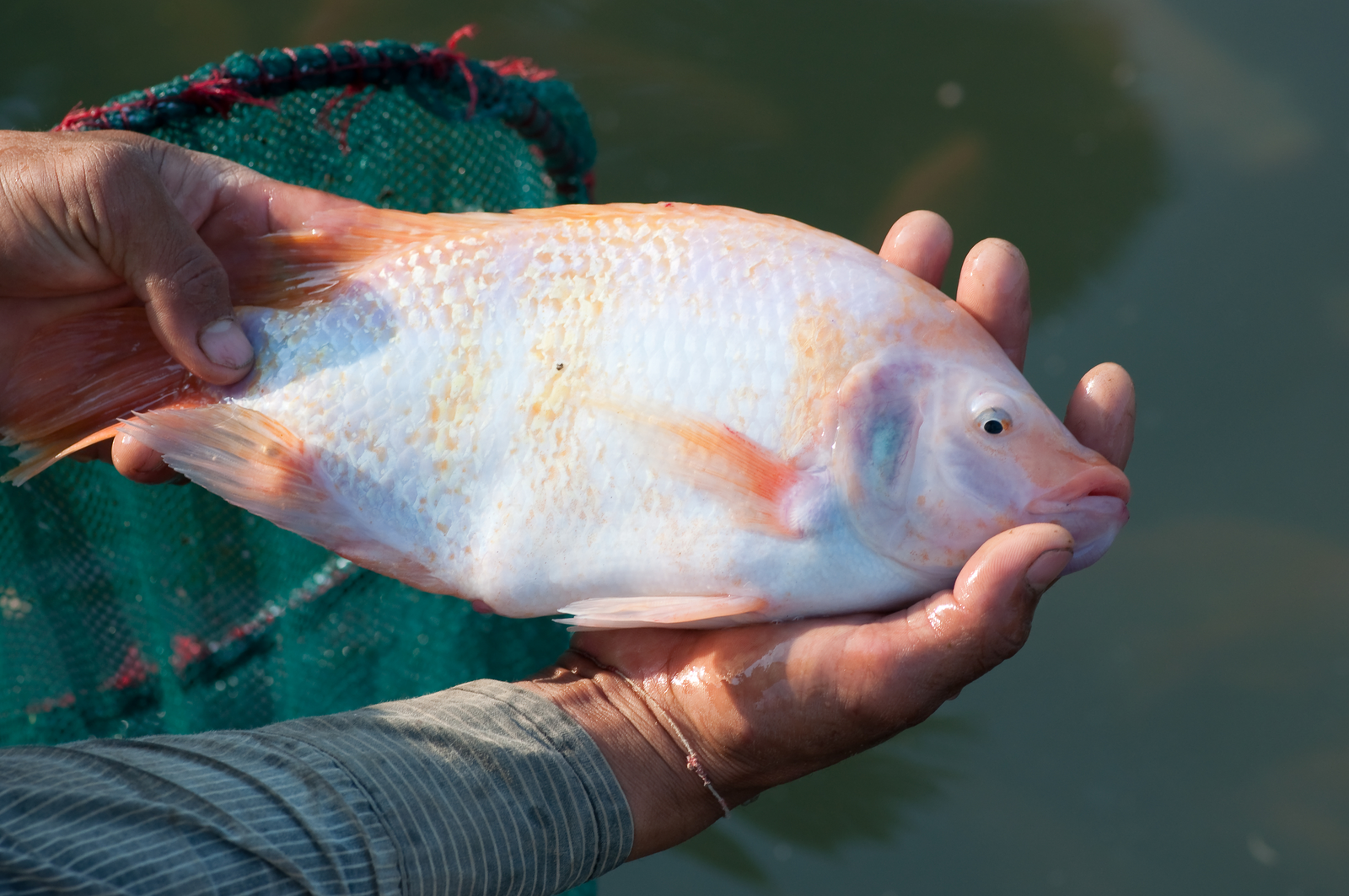
Non-starch polysaccharides (NSP’s) are leading to a wide range of anti-nutritive effects. However, only a limited number of such studies have been conducted in fish. Here we give some latest insights into whether non-starch polysaccharidases (NSP-ases) supplemented in fish feed are able to hydrolyse these unwanted NSP’s.
Tilapia fish are categorised as herbivorous fish, but are able to utilise a wide variety of food, including aquatic larvae and insects. To meet the high amino acid requirements of tilapia feed, fish meal is most commonly used as a source of protein. It is highly digestible and has a favourable amino acid profile. Because the production of fishmeal is restricted to certain parts of the world only, the price is becoming too expensive for aquaculture. So for sustainability reasons it is important that the inclusion of fishmeal is reduced and replaced by plant-derived protein sources. The main reason for limitation of using vegetable protein sources is the presence of relatively high amounts of non-starch polysaccharides (NSP’s). NSP’s are leading to a wide range of anti-nutritive effects. Only a limited number of such studies have been conducted in fish. Non-starch polysaccharidases (NSP-ases) can hydrolyse these NSP’s and overcome their negative effect, but is this true for fish as well?
Study on enzymatic complex
The aim of this study was to evaluate the effect of inclusion of an enzymatic complex in low fish meal diets for Nile Tilapia (Oreochromis niloticus) on performance. The experiment was conducted in Thailand on 450 male juvenile Nile Tilapia distributed in a complete randomised design with five treatments and three replicates per treatment. The fish were grown in cages, considered as one replicate, with a stocking density of 30 individuals per m2. Initial body weight was 200 grams. Performance parameters (body weight, feed intake and feed conversion rate) were evaluated after 4 weeks (period 1), 8 weeks (period 2) and at the end of the study at 12 weeks (period 3). The experimental diets were formulated to contain 25% crude protein. The fish meal content was limited to 6%. The most important vegetable protein source was soybean meal 44% present at 31% in the diet. Furthermore, the diets were composed of rice, yeast 35%, cassava pulp and wheat bran (Table 1). Rice was supplemented as broken uncooked rice or as precooked rice. The experimental diets enclosed a high amount of NSP fibres due to the high % soybean meal in the diet and the use of wheat bran. The enzymatic complex used in this study (AveMix®) contains xylanase, glucanase and pectinase activity. The same enzyme combination was added at half dosage (50 grammes/tonne) or full dosage (100 grammes/tonne). The feed was supplemented as pellets. Pellets were produced under low temperature conditions (50-60°C) and fed three times a day.
Improved performance
The trial results are shown in Figure 1. When discussing the results one should first look at the effect on performance due to the substitution of uncooked rice by precooked rice. Overall all performance parameters clearly improved. Comparing T1 and T3, body weight gain, feed intake and the feed conversion rate (FCR) improved for the total trial period with 6%, 3% and 8% respectively. Fish were able to take up more feed and convert it into an increased body weight gain, suggesting an increased digestibility. As precooked rice contains more digestible starch, the increase in performance in fish fed this diet was not unexpected. Supplementing the full dosage of the enzymatic complex to T1 containing uncooked rice increased body weight with 11%, 21% and 11% after respectively period 1, 2 and 3 compared to T1. Feed intake was equal in period 1 and increased with 6% in period 2 and 12% in period 3 compared to T1. This resulted in an improved FCR of 41%, 33% and 6% in the consecutive trial periods. As the enzymatic complex only contained NSP-ase activities the treatment effect was purely mediated by hydrolysing the NSP fibres. Also supplementation of the NSP-ase complex, both full and half dosage level, to T3 containing precooked rice was able to increase performance. Body weight enhanced from 3% to 18% depending on dosage level and period considered. The same was seen for the feed intake which raised from 2% to 9% (except for period 1 where the treatment had no impact). Feed conversion rate improved specifically in the first and second period, namely with 30% and 29% for the full and half dosage at the end of period 2. The addition of the full AveMix® dosage resulted in more clear improvement of body weight, feed intake and FCR compared to the addition of half the dosage. The dosage response was not linear as is often the case.
Hydrolysing NSP fractions
Overall the trial treatment 4 (diet containing precooked rice supplemented with the full dosage of the enzymatic complex) led to the best performance. In general it can also be concluded that addition of the enzyme led to an explicit increase in performance regardless of the starch source used. Moreover the effect of the enzyme was larger than the effect of the starch source. The included NSP-ase activities xylanase, glucanase and pectinase were able to hydrolyze the NSP fractions, both the soluble and insoluble ones, leading to an enhanced digestibility. Pectinase and glucanase played an important role in combating the negative effect of NSP’s. Amylase was not required to give such performance increase, hence not included in the enzymatic complex. The diets contained a high inclusion of soybean meal rich in NSP fibres, more specifically pectin structures. It was also observed that the addition of the NSP-ase complex had a larger impact on performance enhancement in tilapia fed the uncooked rice. Starting from a lesser performance (T1) there was obviously more room for improvement. Overall enzyme addition had most impact on body weight in period 2, while feed intake improved gradually with the biggest increase at the end of the trial.
Conclusion
In conclusion, the present research question can be answered positively. A well-chosen enzymatic mixture of NSP-ase activities can overcome the negative effect of reformulated Nile Tilapia diets and improve fish performance, when fish meal was limited and replaced by soybean meal as a vegetable protein source.




